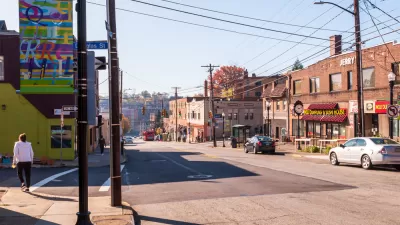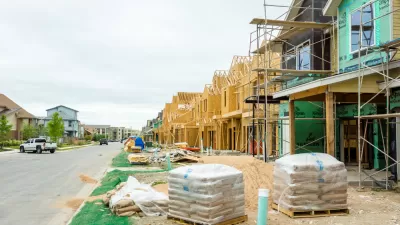As the dust settles from the Great Recession—evidence is growing to support the growing relevance of urban areas in the overall economic picture of the United States.
Josh Lehner shares news of work by the Oregon Office of Economic Analysis to update data on employment growth by metro size for the United States. Lehner summarizes the data:
In the big picture, not much has changed in the past year or two. America’s largest metros (the 51 with a population of 1 million or more) have not only seen the strongest gains in recovery, they are growing at faster rates than their smaller metro and nonmetro counterparts. In other words, the gap is widening, even as the rural recovery is real, albeit slow.
The article includes three infographics that provide detail and illustration of these points.
In a separate article, Joe Cortright follows up on that post to provide additional evidence of the growing significance of cities to the economic health of the country as a whole. In addition to making use of the infographic created by the Oregon Office of Economic Analysis to show job growth in large metro areas, Cortright makes use of three other metrics to make his case: Fitch Ratings, the rent gradient (with data from the decennial census and the American Community Survey), and the walkability premium (with data from Zillow Talk).
FULL STORY: Metro Size and Employment, 2015

Planetizen Federal Action Tracker
A weekly monitor of how Trump’s orders and actions are impacting planners and planning in America.

San Francisco's School District Spent $105M To Build Affordable Housing for Teachers — And That's Just the Beginning
SFUSD joins a growing list of school districts using their land holdings to address housing affordability challenges faced by their own employees.

The Tiny, Adorable $7,000 Car Turning Japan Onto EVs
The single seat Mibot charges from a regular plug as quickly as an iPad, and is about half the price of an average EV.

Seattle's Plan for Adopting Driverless Cars
Equity, safety, accessibility and affordability are front of mind as the city prepares for robotaxis and other autonomous vehicles.

As Trump Phases Out FEMA, Is It Time to Flee the Floodplains?
With less federal funding available for disaster relief efforts, the need to relocate at-risk communities is more urgent than ever.

With Protected Lanes, 460% More People Commute by Bike
For those needing more ammo, more data proving what we already knew is here.
Urban Design for Planners 1: Software Tools
This six-course series explores essential urban design concepts using open source software and equips planners with the tools they need to participate fully in the urban design process.
Planning for Universal Design
Learn the tools for implementing Universal Design in planning regulations.
Smith Gee Studio
City of Charlotte
City of Camden Redevelopment Agency
City of Astoria
Transportation Research & Education Center (TREC) at Portland State University
US High Speed Rail Association
City of Camden Redevelopment Agency
Municipality of Princeton (NJ)




























